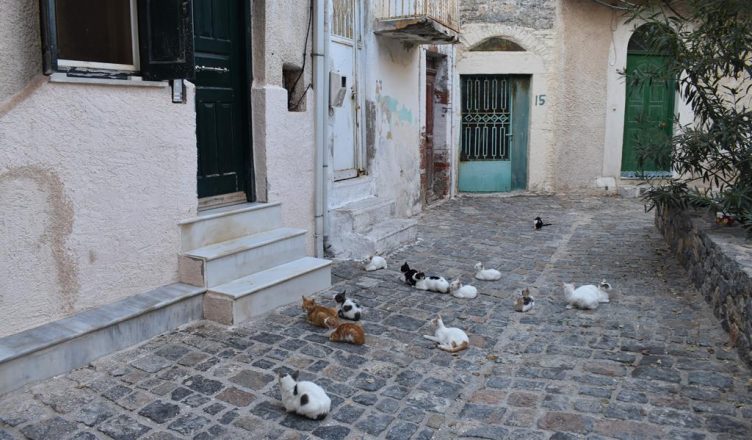Authors – Merel van der Vaart and Nicole McNeilly
Team-Based Inquiry is a light-touch evaluation and research methodology specifically for teams that produce audience-facing and/or informal learning products. In this first of three articles about Team-Based Inquiry, we introduce the methodology and how we are using it in Mingei. In our follow-up article, we share what the heritage partners and Waag have learned from the process, and, in the final article, we’ll evaluate its use in the project and set out recommendations for others who wish to use it as a learning and impact methodology.
The background to Team-Based Inquiry
Team-Based Inquiry (TBI) has been around for more than a decade. It was created by the Nanoscale Informal Science Education Network (NISE Net), who have also produced a guide for museum educators on how to use the methodology. Much of how we apply the methodology in Mingei has been drawn from this guide, though we have also adapted it for our own use and published our own guide to support the use of TBI in heritage crafts contexts.
TBI can be used for research and evaluation and improving processes and outputs in a focussed, low risk, light-touch, iterative and team-based setting. We decided to use TBI in Mingei in order to facilitate organisational learning and to give heritage partners control over the process of making impact for themselves (in terms of their digital transformation and involvement in the project) and for their audiences, the ultimate beneficiaries of their participation in the project. One of the key assets of the methodology is that it was designed to be light-touch and effective in bringing about tangible improvements, which is important if you’re already involved in a busy schedule of building apps and exhibitions, as is the case for the partners in Mingei.
An overview to TBI: Question, Investigate, Analyse, Improve
As a method for evaluation and improvement, TBI makes use of a cycle of inquiry. This cycle of inquiry consists of four stages: Question, Investigate, Reflect, and Improve.
Moving through these stages is a team effort. Some stages could be carried out by a smaller number of people; for other stages all team members should be involved. For digital heritage projects like Mingei, it’s great also to have technology partners involved where possible. TBI cycles can be conducted at any point in a project cycle but you should remember that the goal is to find actionable improvements. Be ready to make some changes!
We go through the four steps below, but encourage you to download the full guide (below) to find out more detail about the methodology.
We recommend kicking off by brainstorming around this prompt: What piece of information will really help us improve (the impact of) our project? If you can answer this, formulate a question that can help you find this information. According to NISE Net, your question should have at least three qualities:
- You don’t know the answer
- It focuses on actionable and useful information
- It can be realistically investigated in the time and with the resources available
Once you have identified your question, it’s now time to get the data that could help you answer it.
As we already mentioned, TBI is a light-touch methodology. You might already have the data you need or you might be able to collect it in a very easy way. You should think about how much information (your sample) you need to collect to be able to answer your question. You should also think about the ethics of collecting this information and how to treat the data, and the participants from whom you collect the data, legally, ethically and respectfully.
There are three steps to this stage: organise your data so that it’s easy to analyse, analyse the data for what they tell you about the research question, and interpret the patterns you have found in terms of what this means for your research question. You should also ask yourself: did you find anything unexpected, or did you find everything you thought you would?
This is the point at which you should draw out some recommended improvements for your project. You might have to plan how to implement them as well as communicate the recommended improvements to your colleagues.
Remember, you don’t need to make big changes to have a big impact. The beauty of TBI, as we’ve seen it in Mingei, is where some small changes can be made to really improve the experience of audiences using the digital applications in the exhibitions.
How we use TBI in Mingei
In Mingei, each heritage partner has led between two to three TBI cycles. Each TBI cycle has taken on different topics, including how to find and work with volunteers; how to improve the experience of non-guided visitors to exhibitions; how to understand the levels of interest of museum visitors; and how to understand visitor movements in the museum. The Waag Mingei team has also conducted its own TBI cycle focussing on impactful and effective project communications and dissemination.
Every three weeks, the three heritage partners, technology partners and Waag have met to discuss broader developments in the pilot exhibitions and to discuss and share what they have been learning in their TBI cycle. This moment of sharing what has been learned is like action research, even though this was not an original objective. We learned that however different the partners are, what they are learning is relevant to everyone. We share more about this in our next blog!
Read more about Team-Based Inquiry in our Hands-on Guide!

